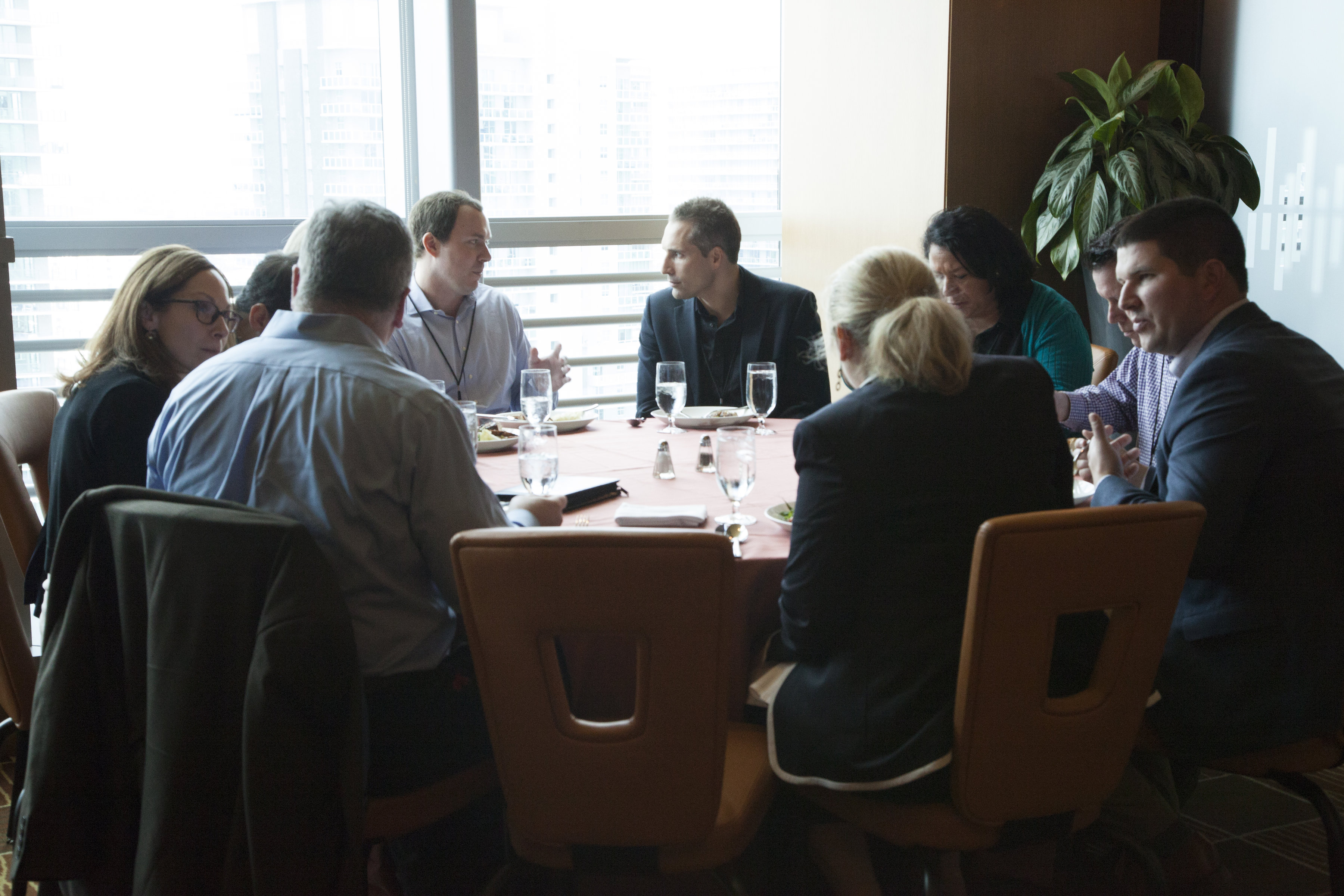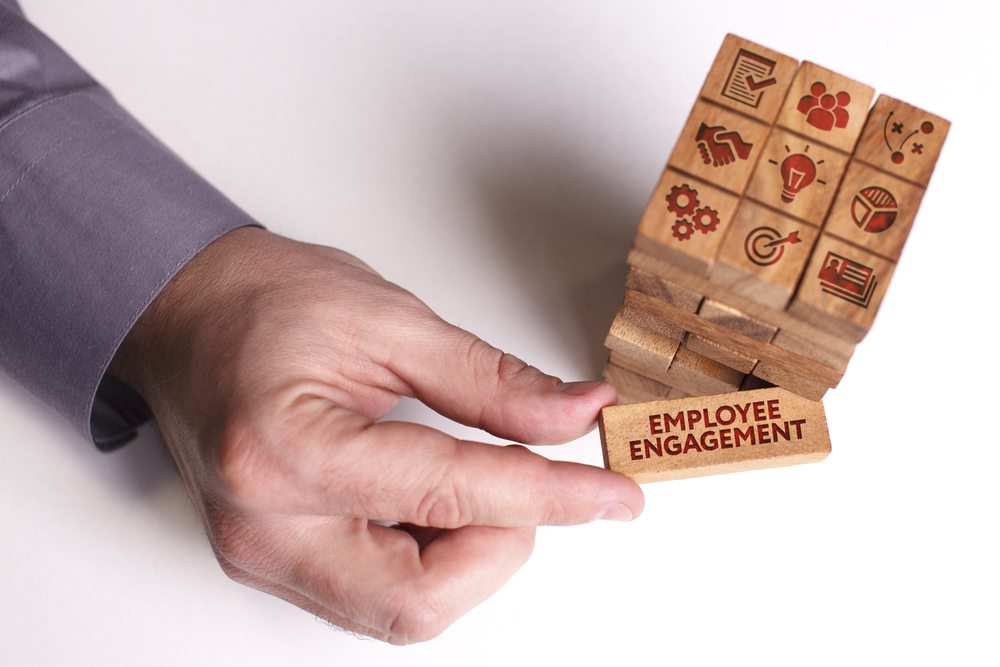Today’s workforce environment is changing faster than ever, driven by digital transformation across every industry. Nearly a third of U.S. companies are likely to die in the next five years, if current trends hold, according to research from the Boston Consulting Group. This change is being driven by greater competition, leading to a need for continual innovation. In these challenging times, how can businesses not just survive but grow?
It comes down to two key areas– customers and employees. By focusing on the customer experience you can increase loyalty and win new business, improving top-line growth. At the same time unlocking the knowledge and skills of your staff will ensure you can compete in today’s knowledge economy. Getting the most out of your people will lead to greater organizational effectiveness over the long term. I sat down with Cindy Peterson, Vice President, Organizational Effectiveness at Macy’s to find the importance of Organizational Effectiveness for today’s enterprises.
Tell us about working in Macy’s Technology?
Macy’s is America’s department store and we operate one of the largest retail e-commerce sites in the world. We consider our website the digital flagship store for the Macy’s brand. Macy’s technology is integral to all our customer touch points, from the point-of-sale terminals to the mobile app experience to the online store. It is a dynamic and fast-paced work environment – defining the digital customer experience and delivering that experience to our customers through both current and new technology platforms.
Are you able to shed some light on your role at Macy’s?
My team, which originally was called “Organization and Process Optimization” – or OPO for short – originally serviced the Macys.com team starting in 2011. While Macy’s has been around since 1858, Macys.com is 22 years old – a relatively “new” part of the organization. Macys.com’s business is on a growth path, and my team’s charter is to help the organization do more, better, faster.
Prior to around the last 5 years, change leadership and organizational optimization were disciplines traditionally led by external consultants. Macy’s Technology was an early adopter of bringing this function in-house and building the capability within the business. There are a couple big advantages of an internal team. Being embedded in the business means you understand the business, the leadership mindset, and how change is best received by the organization. I’m also able to build a team that has multi-faceted skillsets and who, in many cases, come from different parts of the organization so they bring deep subject matter expertise in different parts of the business with them to this role.
Every other function and leader within the technology and digital organization has a day job. They have to steer a big ship and keep it on course toward delivering for the customer. For myself and my team, helping the organization “change the engine at 30,000 ft” is our day job.
Can you share more insight into your internal structure? Who do you report do and how is the Organizational Effectiveness team set up?
My team reports into the business rather than as an HR function, and that reporting structure was very intentional. While we partner closely with HR on many initiatives, our focus is on HOW we work – through people, process, and teams. While we have moved around a bit over the years, we now report directly to the CTO and service both the technology organization as well as our product, UX, and portfolio functions.
The OE team is a team of six. Having a small team is very intentional because in any organization there is a capacity for change. One of our responsibilities is to have a pulse on that capacity for change and to make sure that we’re not over-prescribing change to people. We want to move fast. Technology and ways of delivering value are evolving rapidly and we want to be able to keep up with that. But when you’re talking about the way people work, changing their behaviors, there’s only so much capacity an individual has for that change at any given time.
How do you characterize the type of individual on your team and how you do what you do?
The nickname we have for our team is the Parachuting Chameleons. I use this term to describe what we do both when I am interviewing potential candidates and on-boarding new team members because I believe it’s the best description of the special sauce I’m looking for. Someday I’m going to write a book about the parachuting chameleons because it is actually a unique set of skills and mindset! These individuals are not easy to find, although are very recognizable when you run across one. My team makes a living helping the organization solve problems. They immerse themselves in whatever part of the organization they are working with, learn as much as they can through discovery efforts across all stakeholder teams.We have to make sure all the perspectives are accounted for in defining the solution and rolling it out. How are we messaging that organization? How are we changing roles and responsibilities? What does it mean for the organization, then, to go through this change? We are there step by step along the way, partnering with the business not only on defining the solution but helping to implement it.
Up front, one of the things we’re very disciplined about is how we measure success. How are we going to know when we come out on the other side of a change initiative that it was successful? Did we solve the problem we set out to solve? That discipline and the rigor around how we measure success if part of our secret sauce as well.
Can you share about Macy’s taking a lean startup approach?
It was 2013, several of our senior leaders, including my predecessor, attended the lean startup Conference. This was before Eric Reese wrote his book Lean Enterprise and the lean startup movement was more widely known in the start-up community, and hadn’t yet been adopted in scale by large enterprises. They brought back the Lean Startup concepts to facilitate change and address the opportunities we saw in optimizing our team delivery models, both from an investment standpoint, but also from an employee engagement perspective.
We wanted employees to have a real sense of entrepreneurship – that they’re connected to the customer and working to solve customer problems. We created a culture in which teams treat their work as if it was their own start-up. Whatever product they’re launching, whatever customer problem they’re trying to solve, they are invested in it as a team.
Eating our own dog food from a lean approach, Macys.com started by testing and learning with one small team, and iterating on lean practices over the course of a year. During this time we measured the business outcomes the team was able to achieve, as well as the team members’ feedback on this new style of working. We were also evaluating how this model changed the interaction with our business stakeholders. It was a different model of stakeholder engagement, and how the business operated with technology. I became personally involved when we scaled Lean Teams from one team to 10 teams and then to 25 teams, and now we’re in the process of building this capability in other parts of the technology organization.
Today, lean is just one of our delivery mechanisms. If you ask any of our technology and product leaders today about Lean, it’s just one of the inherent ways that they know to deliver value to the customer. Four years ago, it wasn’t even defined. We were very much at the forefront of building lean teams at scale in a large enterprise.
What would you say to companies that are looking at using this approach? Is there any kind of lessons learned so far or things you wish you had done differently?
You’re definitely hitting on the focus of my talk at the CLO Forum. Just today, I had a group visiting us in the Macy’s Tech office who asked these very same questions. They’re working on the technology solutions and processes for corporate HR, and want to understand how they can use lean to deliver value to the business. How do we do this lean thing? How could it translate to the work they are doing? That translation, the “what does it mean for us” is different for everyone, but there’s certainly common lessons to be shared.
The first lesson is the “eating our own dog food” approach. Test and learn your way into a lean model of working. Don’t take your most critical corporate initiative and tell your CEO “Hey, we’re going to try to deliver using Lean Startup!” That probably is not going to be the optimal environment for being able to learn and pivot along the way, as you see what works and what doesn’t. When we started, we picked something that had high potential to show results, but wasn’t one of the critical business initiatives. It was something that we knew had an upside but there was room to prove it out, and if it failed, the business wasn’t going to be affected. That’s my first lesson learned. Start with test and learn and refine your model until you have something that is proven to work in your organization.
The second lesson is to make sure that you have a way to measure the success of working in this new way. What would have been delivered using a traditional methodology? What would success have looked like? Then compare the results to what you were able to accomplish with this new way of working. This will enable you to tell the story of why it is worth the investment to change the way people work. It’s not just because it’s Lean Startup and lean is buzz-worthy. You need to be able to demonstrate the ability to deliver more customer value for a measure of effort – cost, time, and resources. Or, were you able to figure out quickly that an idea proved not to have the benefit you expected so you were able to learn quickly, fail fast and move onto something else that will deliver business value. It comes down to this: What’s the problem you are solving for? Design your success metrics around solving that problem.
The third lesson is engagement of that first team.They need to be fully committed and brought into what you’re doing, but they also should be fully aware that they are part of testing something new and different. It’s going to be bumpy and this team will be essential in providing the feedback that you need to determine what is working and not working. You need to provide them with a safe harbor to think and work in new ways. You need to choose individuals who are motivated and energized to be part of something new and different.
Then, building the team is critical. They need to know that they are in it together and that they are supported and sponsored in this new way of working. At the beginning, there was a huge amount of leadership support and intervention needed to overcome hurdles – far more than you would expect for a normal “project team”. The reason is that the first Lean team at Macy’s ran into hurdles that a normal team wouldn’t run into, because they were working differently. You need to be prepared for blocking and tackling from a leadership perspective and have leaders who are very hands-on, which can be a very different model than standard leadership approach.
Cindy will be joining us as a keynote speaker at this year’s Chief Learning Officer Forum Spring taking place on May 15-17th in San Francisco. To join our 3-day conference with over 45+ speakers and 100+ L&D professionals from across the landscape. Book your pass HERE to see our exclusive offers and discounts.
Hannah Mitchell
Content Director- CLO Forum







